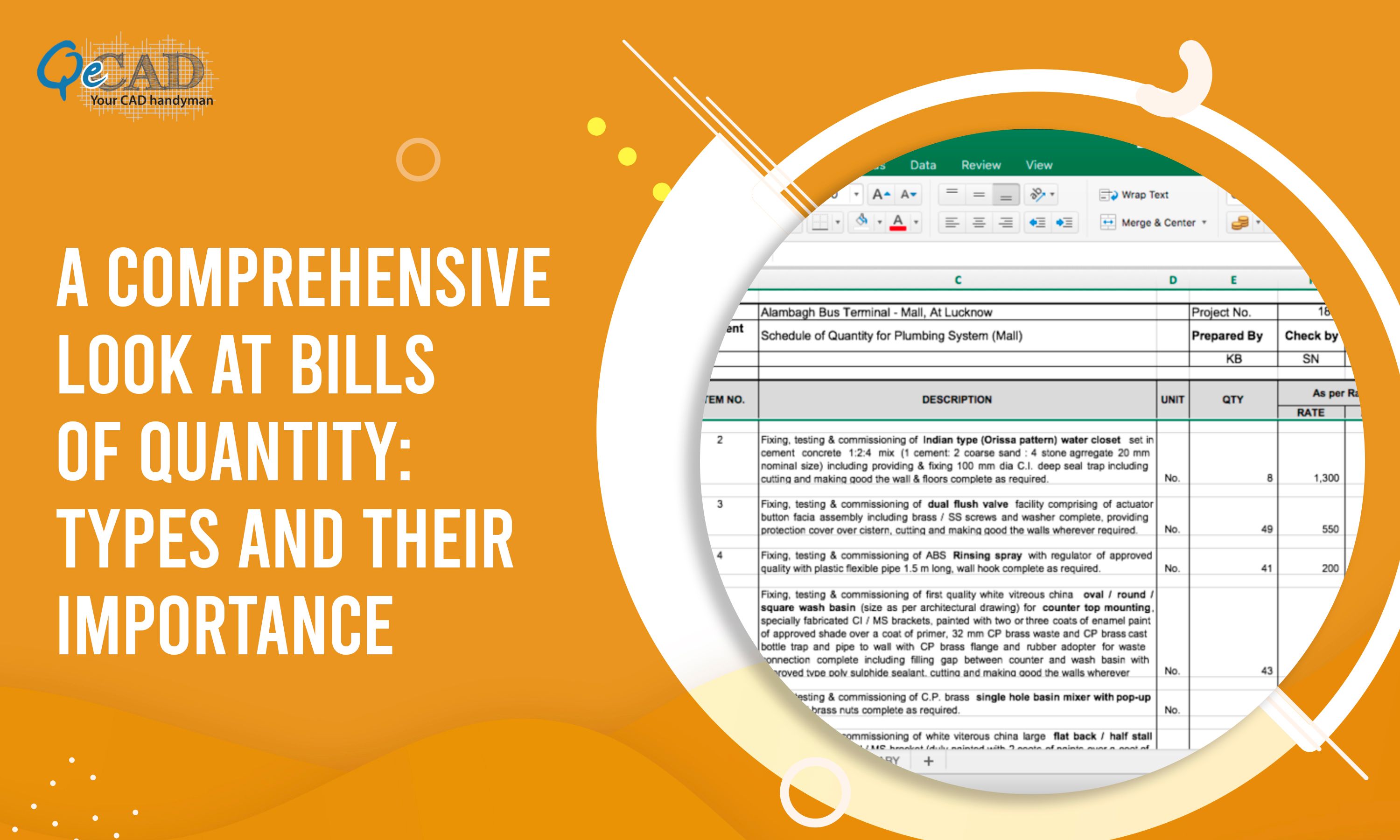
A BoQ (Bill of Quantity) is an important aspect of 5D BIM Services which outlines the materials and labour required for a project. It also serves as a vital instrument for cost estimation, budgeting as well as communication among stakeholders. In this blog post, we will explore what a Bill of Quantity is, the different types it encompasses and why it remains a critical asset in today’s fast-paced construction environment.
Understanding the BoQ’s role can help project managers, contractors and clients to navigate the complexities of modern construction with greater confidence and efficiency.
What Is a Bill of Quantity?
A Bill of Quantity is a construction document that provides an itemized list of materials, parts along with labour required for a construction project. It acts as a detailed guide for cost estimation and budget management. Typically prepared by a quantity surveyor, the BoQ includes the detailed descriptions, quantities as well as the units of measurement for every aspect of the project.
Key Components of a BoQ
- Description of Work: This section covers the specifics of the project which includes the scope and details of each task or item.
- Quantities: It refers to as the accurate measurements of the materials needed right from the concrete to fixtures thereby ensuring that nothing is overlooked.
- Units of Measurement: It symbolizes the standard units (like square meters, kilograms, etc.) that facilitate clear understanding and consistency.
- Rates and Prices: They are the estimated costs associated with each item, allowing for an overall budget projection.
- Total Costs: A summary that combines all the elements for a clear view of the total financial outlay required.
Types of Bill of Quantities
Understanding the different types of BoQ is essential for effective project management. Here are the primary types used in the industry:
- Elemental Bill of Quantities
This type organizes the BoQ into sections based on the major elements of construction, such as substructure, superstructure and finishes. It offers a clear breakdown of the project components, simplifying the understanding of the overall costs related to each section.
- Trade Bill of Quantities
The Trade BoQ categorizes items based on specific trades or disciplines such as electrical, plumbing and carpentry. This format helps the contractors to focus on their particular areas of expertise thereby facilitating the targeted bidding and procurement processes.
- Operational Bill of Quantities
This version is designed for ongoing maintenance and operations after the project is completed. It outlines quantities related to routine repairs, maintenance tasks along with the other operational needs ultimately helping facility managers plan for the future expenditures.
- Annotated Bill of Quantities
An annotated BoQ includes additional notes, specifications as well as references for each item. This detailed information aids in clarifying requirements and expectations thereby minimizing the risk of miscommunication during the construction process.
- Approximate Quantities BoQ
This type provides rough estimates of quantities when detailed drawings and specifications are not yet available. It is useful for the initial budgeting discussions and can guide early decision-making before the final designs are completed.
- Detailed Bill of Quantities
This is the most comprehensive type of BoQ which is prepared once the designs and specifications are finalized. It includes a complete breakdown of all materials and labor required making it essential for accurate pricing and tendering.
Why Is a Bill of Quantity Important in 2024?
As we embrace the new technologies and face economic uncertainties, the importance of a Bill of Quantity in the construction industry is magnified. Here are some key reasons why:
- Enhanced Cost Management
In 2024, managing budgets effectively is more crucial than ever. With fluctuating material prices and labour costs, a well-prepared BoQ provides a reliable framework for accurate financial forecasting. It enables project managers to identify potential cost overruns early and make necessary adjustments.
- Improved Project Planning
A detailed BoQ facilitates better project planning by breaking down the tasks into manageable components. This level of detail allows the project teams to schedule work efficiently, allocate resources effectively and ensure that timelines are met.
- Risk Mitigation
With the current global economic climate and potential disruptions, understanding every aspect of a project is essential for risk management. A BoQ highlights the areas that may pose financial or logistical challenges thereby allowing teams to proactively address them.
- Streamlined Communication
A Bill of Quantity serves as a common language between various stakeholders including clients, contractors and suppliers. This clarity reduces misunderstandings and aligns everyone on expectations and deliverables.
- Facilitating Competitive Bidding
For contractors, having a comprehensive BoQ can significantly enhance the bidding process. It allows them to submit more precise and competitive bids thereby increasing their chances of securing projects while ensuring that they fully understand the scope of work.
- Sustainability and Efficiency
As the construction industry increasingly focuses on sustainability, a BoQ can help identify materials and methods that align with eco-friendly practices. It can facilitate the selection of the sustainable options and optimize resource usage ultimately contributing to greener projects.
Conclusion
In 2024, the Bill of Quantity remains an indispensable tool of the construction industry. It not only aids in cost estimation and project management but also enhances the communication among stakeholders as well as supports risk mitigation strategies. When we navigate through the complexities of the modern construction, leveraging the benefits of a well-prepared BoQ while opting for the BIM Services is proven to be the key to delivering successful projects on time and within budget.
